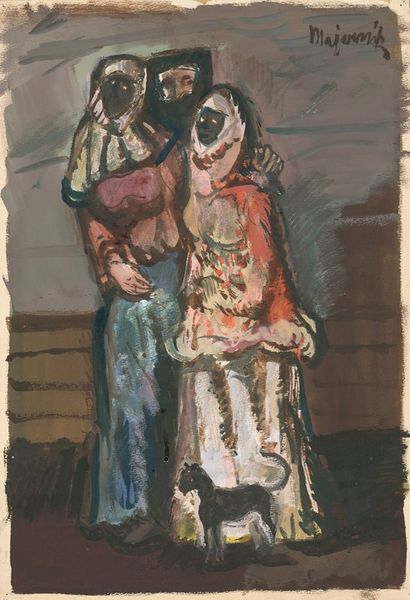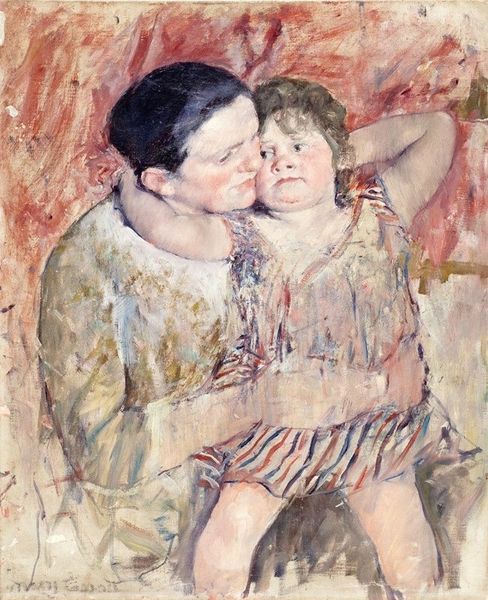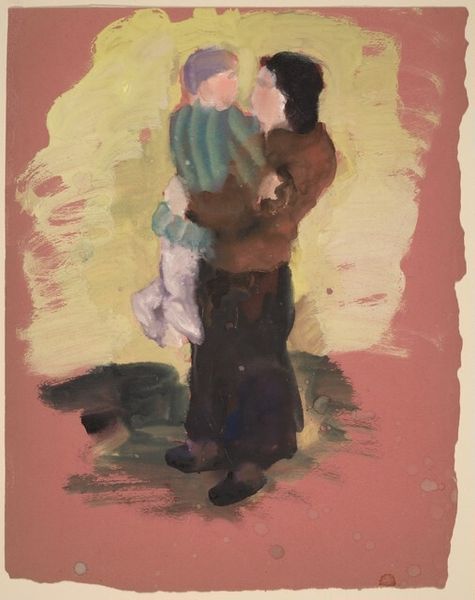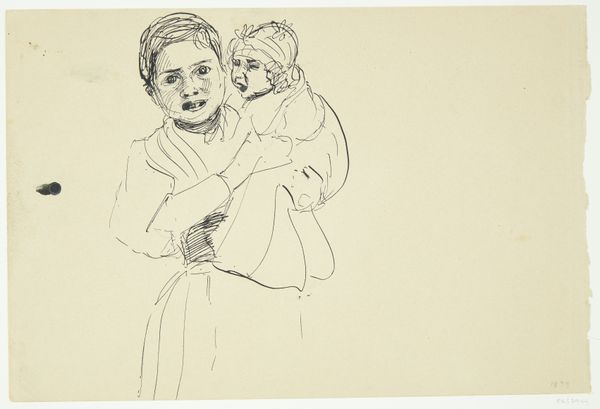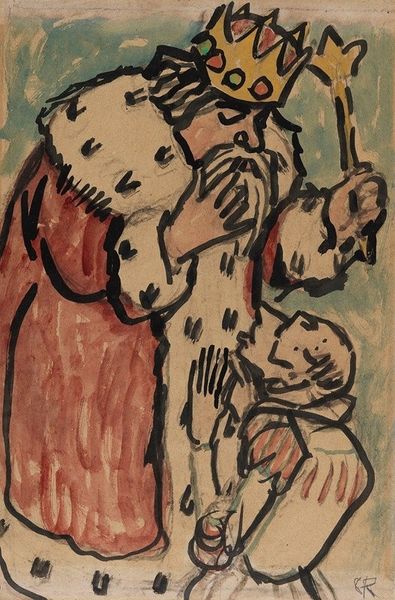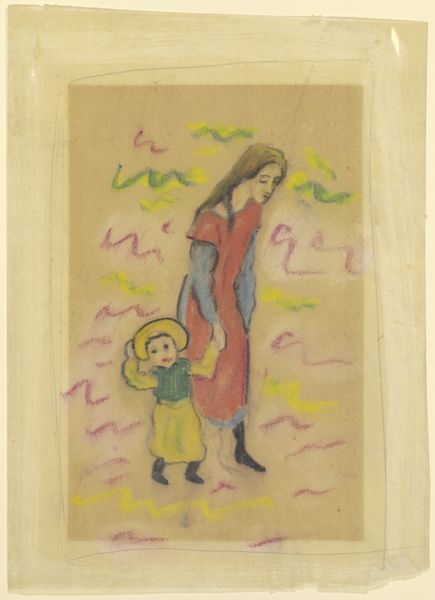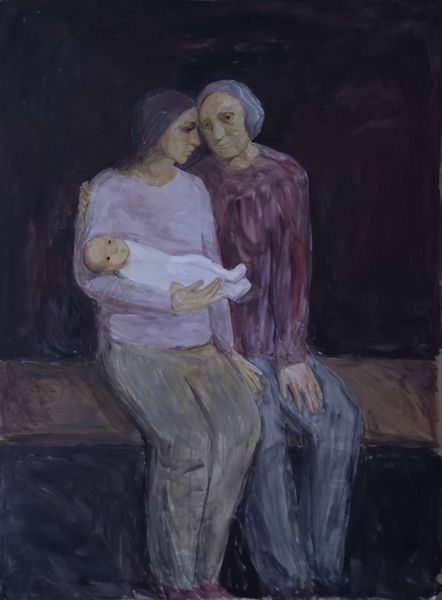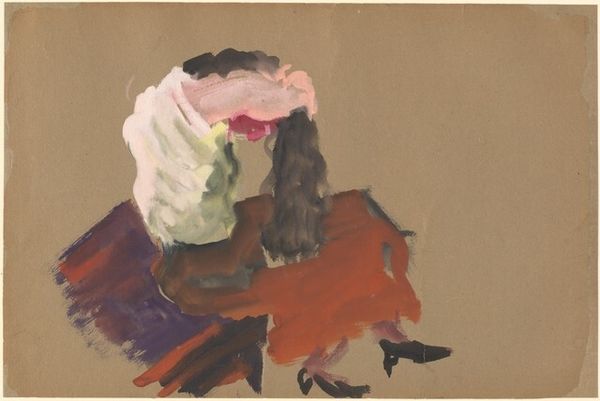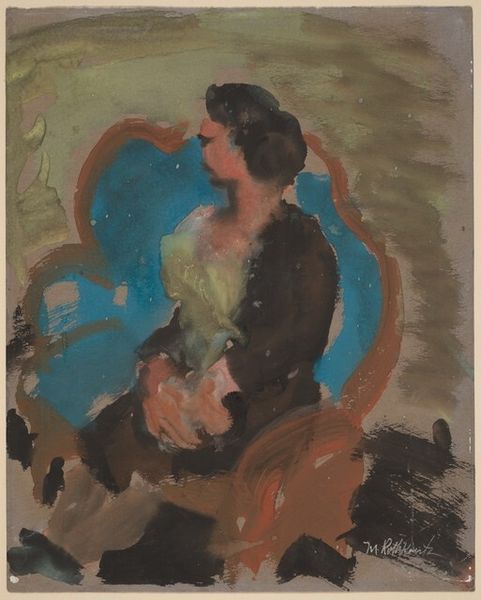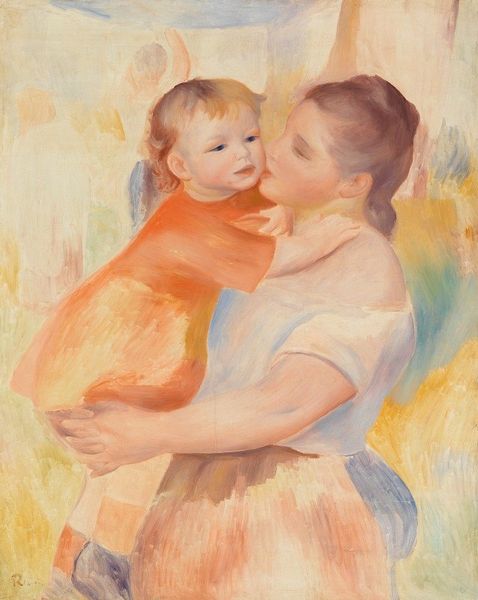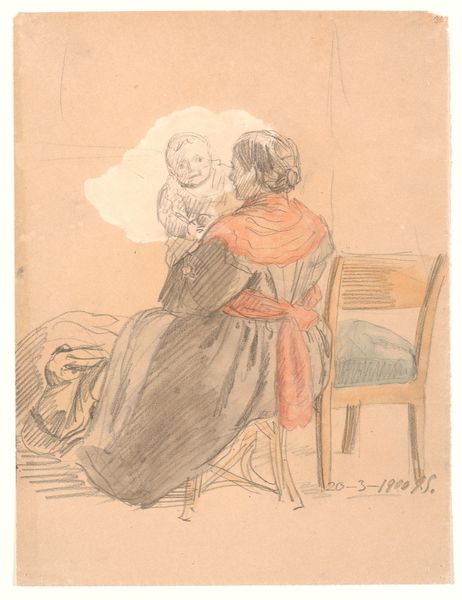
drawing, painting, watercolor
#
portrait
#
drawing
#
painting
#
figuration
#
oil painting
#
watercolor
#
expressionism
#
portrait art
Copyright: National Gallery of Art: CC0 1.0
Mark Rothko made this painting of a Standing Woman Holding a Child with oil on canvas. The apparent simplicity of this image belies its complicated relationship to the history of art and to the institutions that supported art in the mid-20th century. Painted in the United States, the woman and child are created with sweeping brushstrokes which are reminiscent of the Ashcan School. However, Rothko also departs from this movement by flattening the image. Rothko has depicted the archetypal theme of the Madonna and Child to explore the complexities of familial and societal bonds. The woman’s gaze, fixed on the child, suggests a world of intimate connection, but the loose brushwork destabilizes any straightforward message. The painting invites us to consider how the institutions of family and motherhood are both comforting and unstable. To understand this painting more fully, we might investigate the artistic, social, and political context in which Rothko was working by looking at sources in the archives of museums, galleries, and art schools.
Comments
No comments
Be the first to comment and join the conversation on the ultimate creative platform.

